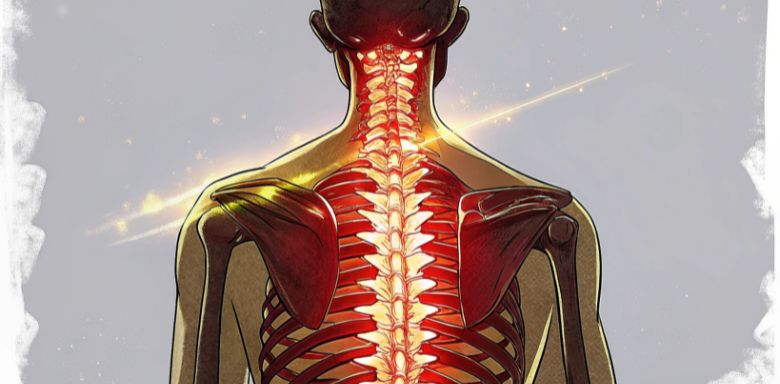Recognize 10 Key Signs and Explore Top Treatment Options
Friedreich’s Ataxia is a rare inherited disease that mainly affects the nervous system and the heart. It slowly harms the body over time, making everyday tasks more challenging. Below, we will look at ten common signs of Friedreich’s Ataxia and outline some of the available treatment options, including the prescription medication, Skyclarys.
10 Signs and Symptoms of Friedreich’s Ataxia
1. Unsteady Gait
People with Friedreich’s Ataxia often have a very wobbly walk. This is because the disease affects balance. Walking may become slower and more difficult as time goes on.
2. Loss of Coordination
Fine motor skills, such as holding a pen or buttoning a shirt, may become harder. The loss of coordination can also affect hand movements and make daily activities more challenging.
3. Muscle Weakness
The muscles in the arms and legs can gradually become weaker. This weakness makes it hard to run, lift objects or even stand for long periods without support.
4. Reduced Reflexes
Reflexes such as those tested by a doctor’s tap on the knee may be weak or absent. This is due to nerve damage that slows down the natural responses of the body.
5. Speech Problems
Some people may notice that their speech becomes slurred or unclear. The muscles used for speaking can be affected, making communication tougher over time.
6. Spinal Curvature (Scoliosis)
The spine may start to curve as the muscles around it become less able to support a straight back. Scoliosis can lead to discomfort or pain and might sometimes need treatment.
7. Foot Deformities
Many people with Friedreich’s Ataxia develop unusual foot shapes. One common example is hammer toes, where the toes bend in a way that causes discomfort when walking.
8. Heart Problems
Friedreich’s Ataxia can affect the heart, causing it to work harder than normal. This might show up as an irregular heartbeat or an enlarged heart and it is a serious sign that doctors need to monitor.
9. Loss of Sensation
Over time, the nerves may not send messages properly, causing numbness or a tingling feeling in the hands and feet. This loss of sensation might lead to problems knowing where the limbs are in space.
10. Diabetes
In some cases, the disease can also lead to diabetes. This is because the body’s ability to manage sugar levels can be affected, requiring extra care with diet and medicine.
Friedreich’s Ataxia Treatment Options
For those who have Friedreich’s Ataxia, various treatment options can help manage the symptoms and improve quality of life. While there is no cure yet, the treatments available can slow the progress of symptoms and make daily living easier. Below is a list of common treatment options.
1. Skyclarys
Skyclarys (omaveloxolone) is a new prescription medication that aims to slow down the progression of Friedreich’s Ataxia. It works by stimulating a specific pathway that lowers inflammation, enhances nerve function and slows the disease's progression. This results in reduced symptoms and an improved quality of life.
2. Heart Medications
Since heart problems are common with Friedreich’s Ataxia, doctors might prescribe medicine to help keep the heart healthy. These medications can regulate heart rate and reduce the strain on the heart.
3. Physical Therapy
Physical therapy involves exercises that help maintain and build muscle strength and flexibility. A trained therapist can create a special exercise plan that helps a person stay active, balance better and reduce the risk of falls.
4. Occupational Therapy
This type of therapy focuses on helping people learn ways to do everyday tasks more easily. Occupational therapists can suggest tools or methods to help with dressing, cooking or writing, making daily routines less stressful.
5. Speech Therapy
Because Friedreich’s Ataxia can affect the muscles needed for speaking, working with a speech therapist may be beneficial. Speech therapy can help improve clarity when talking and also teach techniques to make communication easier.
6. Assistive Devices
Devices such as braces, walkers or wheelchairs can help people move around safely. These tools are important in preventing falls and giving a person more independence in daily activities.
7. Surgery
In some cases, surgery may be helpful, especially when dealing with severe scoliosis or other orthopedic problems. Corrective surgery can help reduce pain and improve posture, but it is usually considered only after other treatments have been tried.
8. Nutritional Support
Eating a healthy, balanced diet is important for overall well-being. Nutritional support plans can be personalized for those with Friedreich’s Ataxia to help manage energy levels and support heart health.
Living with Friedreich’s Ataxia can be challenging, but understanding the signs and exploring all available treatments can make a significant difference. Remember that while the disease may alter the way you move or feel, there are several ways to manage symptoms and maintain a good quality of life.
